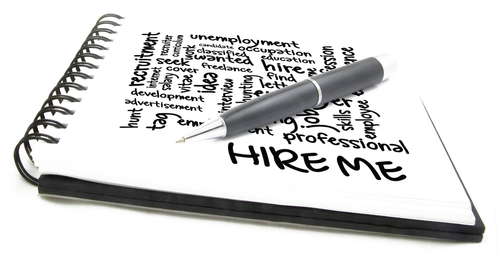

The best way to learn how to end a cover letter, is to learn how to begin a cover letter effectively. Many people glance over the importance of a cover letter, thinking that an employer will do the same, when this simply isn’t the case. Depending on the type of employer, they may even value the cover letter over the value of the resume. How to begin, and how to close a cover letter are essential aspects of your next application. Let’s think about how…
Why is a cover letter so important?
A cover letter is important because it is essentially a demonstration of fit, relative to any position. The fact of the matter is that when you see a position you are interested in, you might be thinking to yourself, “of course I can do that!” The same thing can’t be said for an employer when they finally take a look at your application. Your cover letter is an expository document, meant to guide a hiring manager to the most important parts of your resume.

Should I create a separate cover letter for each position I apply for?
There are two different schools of thought as it concerns cover letters: 1) that you can simply have one cover letter “template” which you can fill in as needed with the company name and the position, and 2) that every cover letter you create should be unique to every position. The ideal answer is that there is a perfect middle-ground between these two thoughts. Once you have identified your prospective career goal, what you want to be doing, that you can create a pseudo-template that is unique to you as an employee.
This comes down to what employers and hiring managers hate more than anything else: the cover letter which reads like it’s one of a thousand, spewed out by a job seeker with a few hours to kill and a whole lot of coffee on deck. A cover letter which reads like it was put together in a simple way is going to make you, the job seeker, sound simple. The last thing you want to do is basically say to an employer, “hey, here is a document I have cobbled together in a matter of moments and sent your way to be an accurate representation of my entire professional history.”
It’s not creative, it’s disingenuous, and most important, it comes off as lazy to your potential employer. If this is your method, and it’s not working, this is the reason why. There is no sense in learning how to end a cover letter that has been created from a template, because the hiring manager probably won’t make it until the end anyways.
What is the basic structure of an effective cover letter?
Your cover letter should read like a brief, emphasis on the word brief, essay about your professional history. You will want to introduce where you have been (professionally), where you currently are (professionally), and where you want to be (of course, professionally). You want to consistently demonstrate fit, and show off the fact that you have read the job posting.
What is the most important part of a cover letter?
The most crucial aspect of your cover is going to be how you end it. How to end a cover letter is probably the number one thing you should be thinking to yourself as you are writing what is essentially going to be your personal introduction to your potential employer. This is going to be the fireworks at the end, the way you leave your mark, and how you stick in their mind.

Here are some of the things you might want to consider:
- Think about adding a ‘greatest hits’ version of your career accomplishments as how to end a cover letter. This is supposed to be an endearing summation, that can be read quickly and concisely, of your professional experience and how you fit into this particular role.
- End with a statement that somehow weaves in the narrative of the company. This could mean working in their motto, their slogan, or something about their corporate culture into your own belief system. This will showcase your ability to become the ideal candidate, the person who is going to thrive (and last) in this role for years to come.
- Invite them to learn more about you from your resume. Point them in the right direction with specific references towards your resume. This way they will have to read the rest of your professional history, because you have led them to do so. Take the time in the last couple sentences to say “on my resume you will see that I have demonstrated leadership in this role, at this company, for this long.”
Have you ever thought about how to close a cover letter? Well, now you have. Hopefully you will take these tips a step farther, and actually incorporate them into your application process. When you’re writing your cover letter, you shouldn’t just be thinking about how to end a cover letter, but how to write a cover letter specifically for you! Make it unique, make it stand out, and write not only for yourself, but for the tone of the company where you want to work.
Leave a Reply